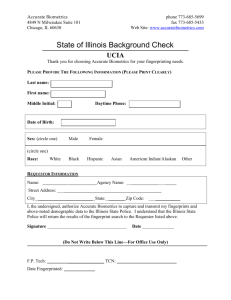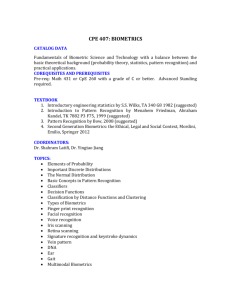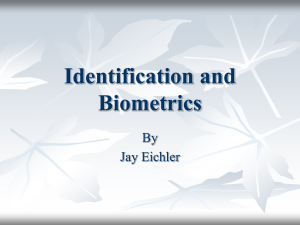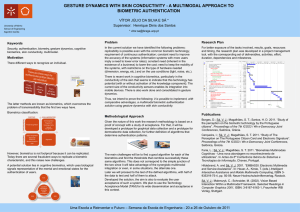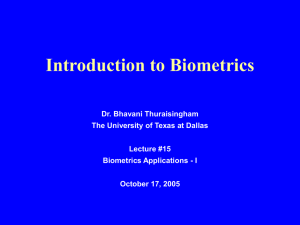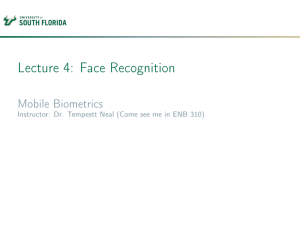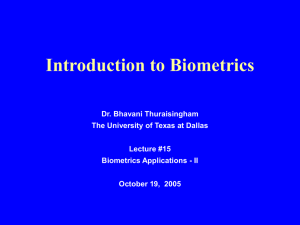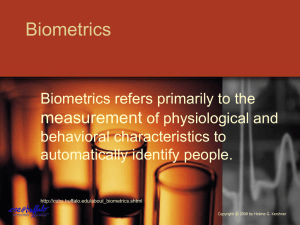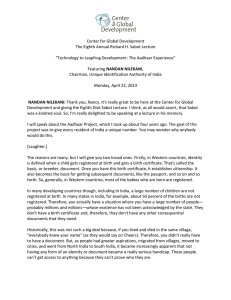Biometrics identification for personal devices
advertisement
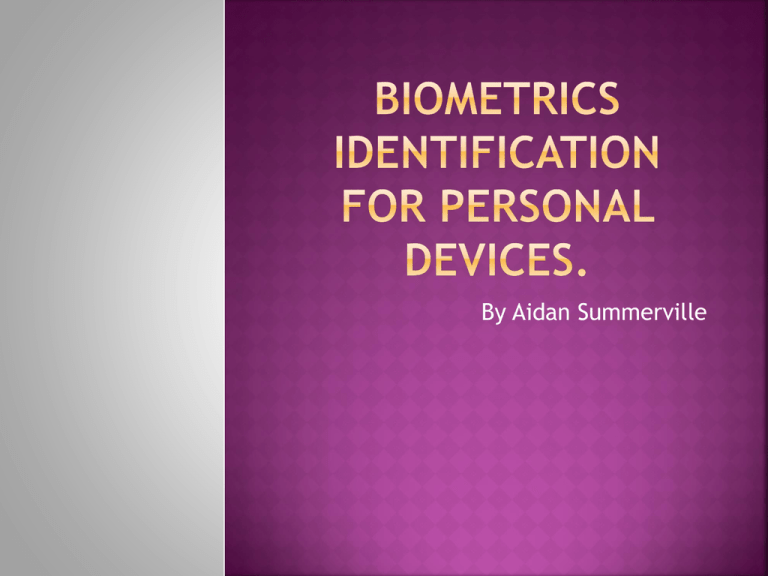
By Aidan Summerville The process inn which a person’s unique physical and other traits are detected and recorded by an electronic device or system as a means of confirming identity.(http://dictionary.reference.com/bro wse/biometrics) Commonly used as personal clock in methods by employers . In more recent times used for personal devices such as laptops and smart phones. 1.Iris. 2.Finger print. 3 .Palm print. 4.Facial Recognition. 5.Hand shape. 6.Retina. 7.Ear. 8.Palm vein Imaging. 9.Voice. The first biometrics used was fingerprint analysis to prove criminal activity. In the 1970s fingerprint identification started to be used on a large scale for personal clock ins for large companies. Later palm print and hand size started to be used for clock ins at large companies. Nowadays it is common practice among most large companies to use biometric check ins as it ensures that it is you using the machine. Iris and retina is used nowadays as it is more reliable than hand size, palm print and finger print, due to the fact that it is far less discriminatory. People who have suffered disfigurement t or limb amputation are unable to use these machines. It is far less likely for an individual to be missing both eyes. It is also much harder to impersonate someone else's, Iris or Retina. Biometrics for personal devices original was introduced by finger print scanners for laptops and later voice and facial recognition software for computers, laptops, smart phones and tablets. Siri for iphone have a new voice recognition software usable instead of a password. Finger print scanning technology is still the most commonly used today as it is by far the easiest and most reliable to use. However usernames and personal passwords are by far and a way the most popular form of security. PROS Protects against fraud. Fast access no chance of forgetting the password. Do not have to remember large amount of passwords. CONS Costly to implement. Discriminatory. Intrusive people have fears about the uses of their information. Some biometrics such as voice recognition are possible to fake with a recording. In the future for personal devices I see some biometrics more realistically being used than others. As cameras for phones become better facial recognition software may be used. I also see palm print scanners possible for Tablets. I don't for see voice recognition to last very long as it is not very secure and is open to theft. Other biometrics may be used but the software and hardware are simply far to expensive in comparison to the ones in use today. To ensure against a fail in biometric or to just ensure the safety of a device it is almost necessary to use two biometrics. For example palm print and facial recognition. Using dual biometrics slows down the speed of use of biometrics but also increases the cost vastly. Certain biometrics are just not viable due to user acceptability. Fingerprints are not social acceptable to use this may be due to the fact that they are associated with crime and government control. Iris and retina scanners are extremely intrusive and would have a lot of people refusing to use them. Jain, Ask. Kumar, A. Biometrics of Next Generation: An Overview. 2010,Second Generation Biomtetrics Springer. Anon,Biometric solutions to personal identification. Trewin, S. Swart, C. Koved, L. Biometric Authentication on a Mobile Device: A Study of User Effort, Error and Task Disruption (2012)

